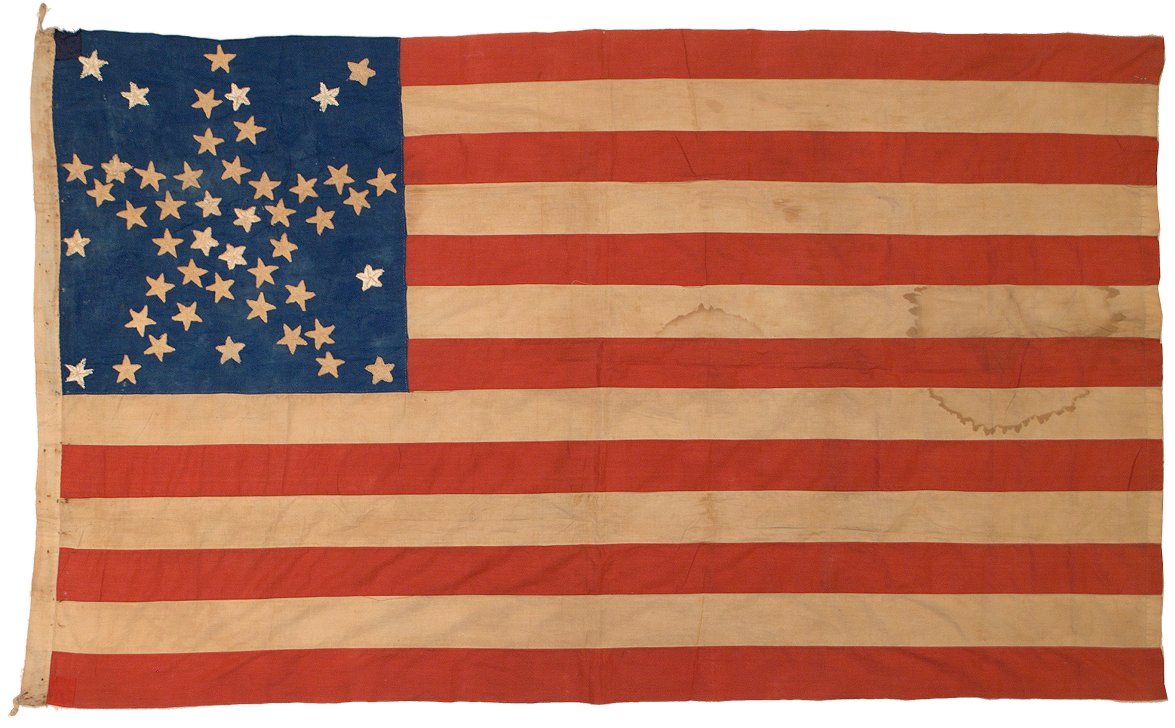
One of the rarest star patterns in all of flag
collecting is the Great Star or Grand Luminary
pattern, in which the stars of the flag are themselves
arranged into the shape of a large star. The
pattern itself is a fantastic visual representation of
one of the nation's mottos, "E pluribus unum",
which is the Latin for "Out of many, One." While
some pieced-and-stitched Great Star flags were
manufactured by cottage industry flag makers, homemade
varieties also exist. This particular flag is
certainly a homemade flag, and the workmanship of the
hand embroidered stars not only demonstrates the higher
level of effort and skill of the original seamstress,
but also is an exceptional example of Americans updating
their flags repeatedly over many generations. This
is a fascinating case example of how studying the
details of a flag's construction can tell a story about
the flag's history. The flag originally began life
with 35 stars. The hand embroidery of the original
35 stars are very finely done. At least two
additional sets of stars were added to the flag by two
different people of later generations. Three
stars, one in the top right corner, one in the bottom
right corner, and one directly below the Great Star,
were added at the time of the American Centennial,
bringing the total number of stars to 38 in 1876.
Then, most likely early in the period of 48 stars, circa
1912, 10 additional stars, as well as one replacement
for a star in the Great Star, were added, bringing the
total to 48. Thus the star count on this one flag
spans a period of nearly 100 years. The original
stars appear to be constructed solely of embroidery.
The later stars actually have a cotton base with applied
embroidery to simulate the embroidery of the
original 35 stars. It's clear, from the distinct
differences in the quality of the handiwork of each
generation of stars, that they were done by three
different hands with different degrees of sewing experience. The canton shows evidence of
embroidered stars being removed in the spaces between
the original Great Star. It's clear that at least
one of the seamstresses who updated the flag, most
likely the one who updated the flag to 48 stars, was not
satisfied at her original placement of the additional
stars, and consequently removed them and repositioned
them to make a more balanced presentation.
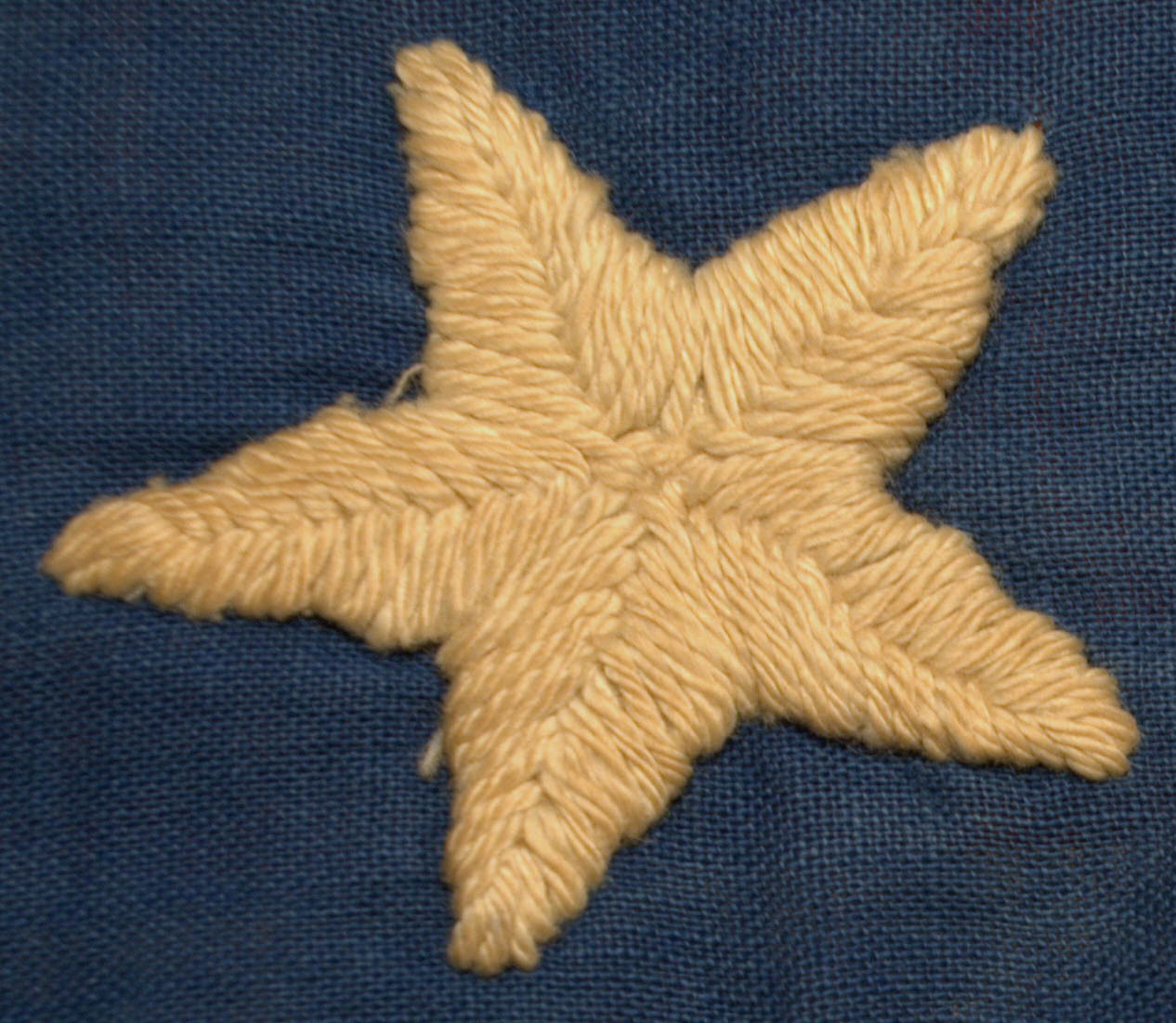 |
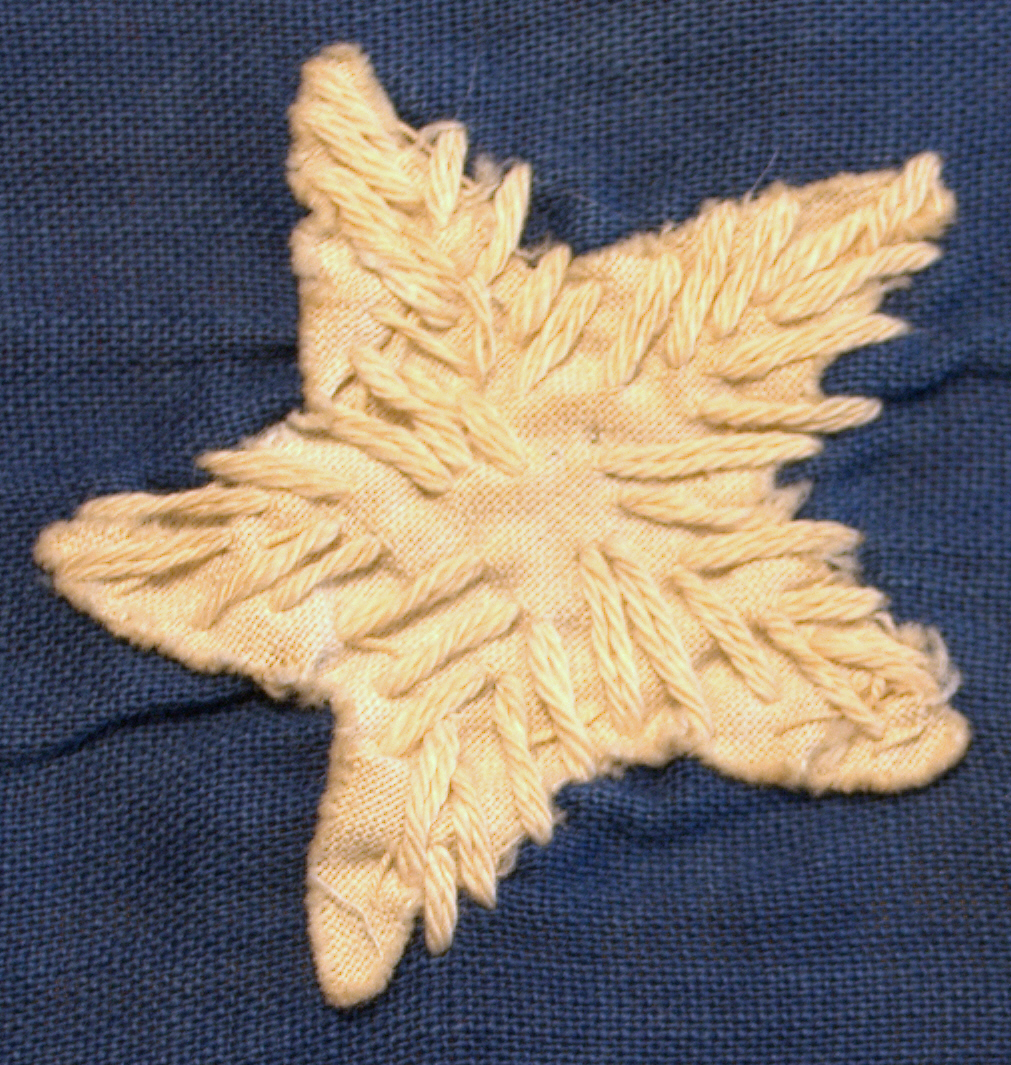 |
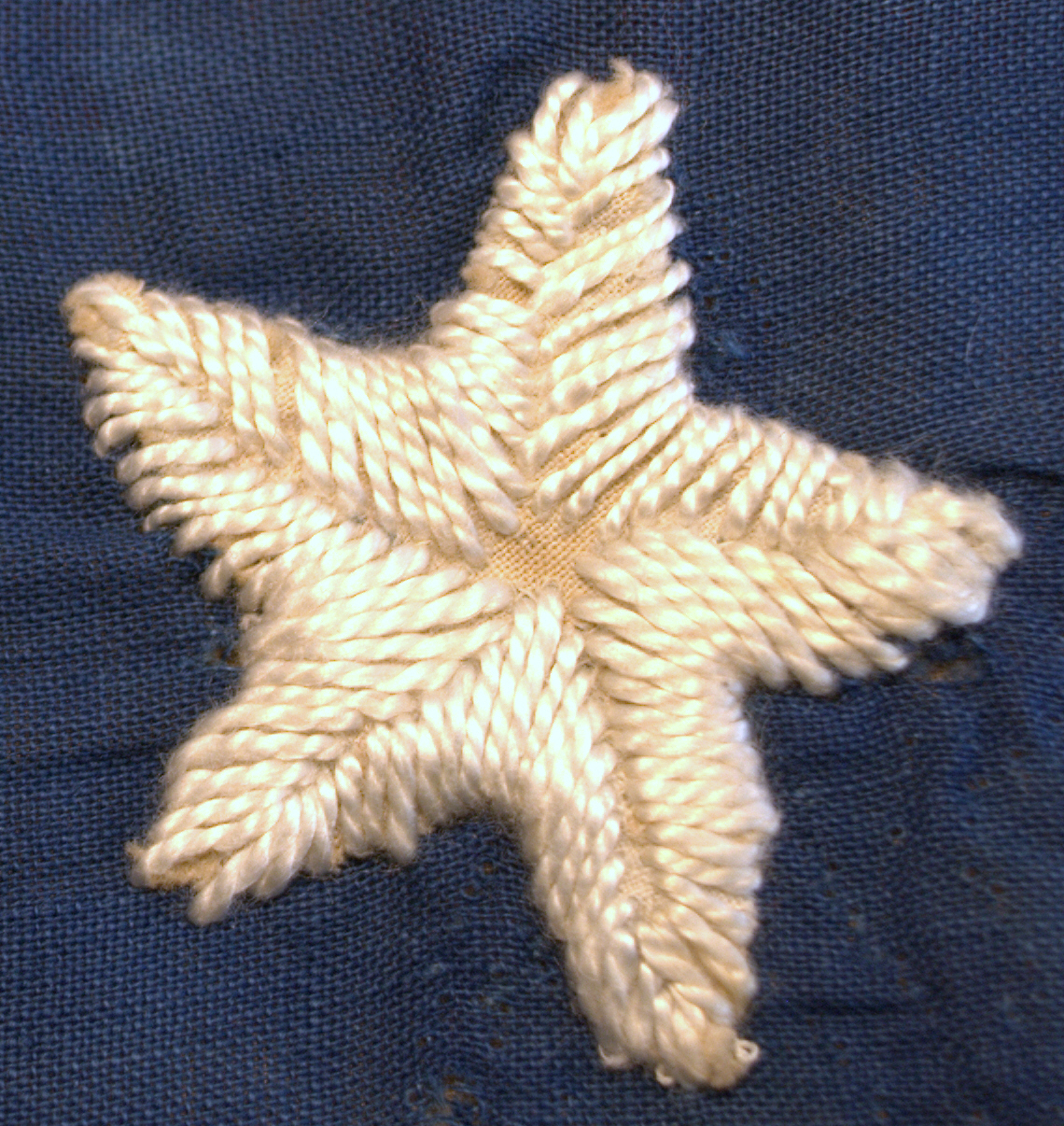 |
One of the
original 35 Stars
1863-1865 |
One
of three additional stars
circa 1876 |
One
of eleven stars (ten plus a replacement star)
circa 1912 |
The flag itself is made
entirely of cotton, with machine sewn stripes and the
canton hand sewn into the stripes. The hoist of
the flag was originally a sleeve, but at some point the
ends of the sleeve were stitched closed, and small ties
were added to the top and bottom of the hoist.
Overall, this is a wonderful example of American flag
making. It tells the story of a flag being handed
down from generation to generation from the time of the
Civil War to the time of World War I, in one of the most
coveted and rare patterns in all of flag collecting--the
Great Star.
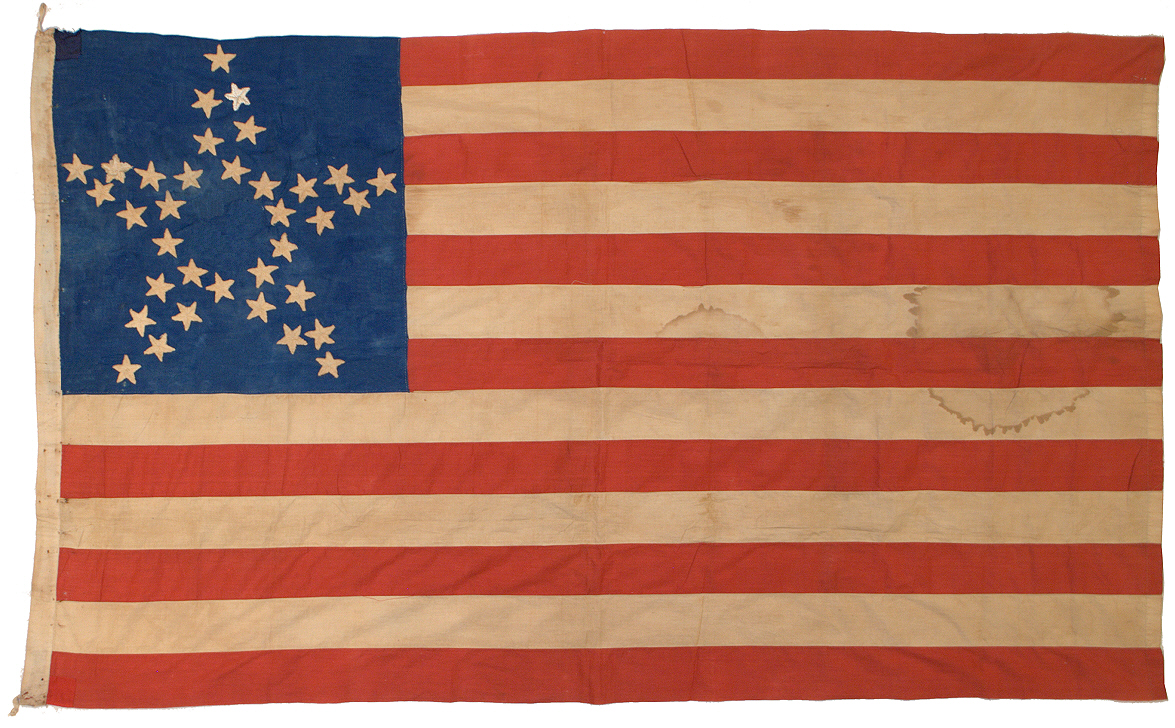 |
 |
 |
The
original star configuration
1863-1865 |
Stars
updated for the American Centennial, 1876 |
The
flag today with 48 stars
circa 1912 |
|

